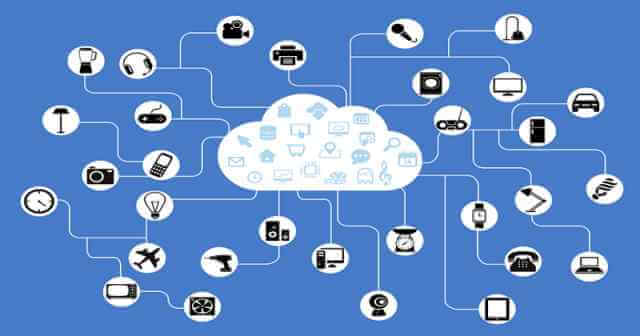IoT technology allows devices to communicate with one another. As a result, IoT finds application in almost every field, from manufacturing industries to homes. Hence, it is not wrong to say that IoT is slowly becoming a part of our everyday lives. IoT homes, or smart homes, are becoming the norm. The initial investment for a smart home may be difficult for people to bear; however, its benefits can help reduce your utility bills in the long run. Smart homes promote energy efficiency. Electronic appliances and devices, such as Nest thermostats, can aid homes in becoming energy-efficient. With such a thermostat, you can remotely control the temperature because the device is connected to WiFi. An IoT device may be a sensor or an actuator (or both). For example, a thermostat is a sensing and actuating device. As a sensor, the device monitors the temperature, while an actuator changes the temperature settings on the thermostat.
Network Protocols for IoT Devices
Connectivity with the internet and among devices is one of the essential features of IoT devices to support a smart home system. Various network standards are in use that maintains a connection between IoT devices. Some common network standards that support IoT devices include WiFI, Bluetooth, ZigBee, Z-Wave, LoRaWen.
Network Protocols for IoT DevicesWhat is Network Topology?Types of Network TopologiesPoint-to-Point TopologyPros ConsMesh TopologyProsConsStar TopologyProsConsBus TopologyProsConsRing TopologyProsConsConclusion
For network protocols to power IoT devices for a home, they must consume less power and range from 100 to 200 meters. For instance, Bluetooth is a suitable network protocol because it offers a range of 100 meters, meaning that IoT devices within 100 meters can communicate. ZigBee is another popular network protocol that connects devices within 200 meters. ZigBee also finds applications in industrial IoT devices because it is a simple network protocol. It can easily connect with microcontrollers and microprocessors. Each of these network protocols is supported by various network topologies. You cannot have a smart home without a network topology that supports the connection between devices. Also Read- Windows Networking Commands You Should Know
What is Network Topology?
A network topology connects various nodes (sensors) in a network configuration for communication purposes. Thus, network topologies refer to how a device connects in a network. IoT devices are also connected in a network topology for communication and data exchange. Each of these topologies has benefits and drawbacks. They also have different applications depending on the constraints. The different types of network topologies are in the next section:
Types of Network Topologies
Point-to-Point Topology
Point-to-Point is one of the basic network topologies. It is also the most simplistic and offers a low-cost solution. However, you can only connect two nodes. Hence, no other devices can connect with this network. One node in the network connects to the internet.
Pros
It is excellent for small areas and networks. The network has fast communication between the nodes since the bandwidth is only allocated to the two nodes. It is easy to install and maintain. It also has low latency (no delays in communication).
Cons
If there are any issues in the connection between the nodes, the entire network will fail. You cannot add more than two nodes to the network. It is not practical for the IoT ecosystem, where multiple devices communicate with one another.
Mesh Topology
Mesh is a complex network topology; a single node connects with other nodes in a network. Therefore, the data has to pass through various routes to reach the gateway node. Despite its complex nature, it is one of the widely-used network topologies in IoT networks. Typically, a mesh network consists of three types of nodes. These include sensor nodes (IoT devices), gateway nodes, and sensor/router nodes. A router node not only captures data but also communicates the data to other devices. Unlike a sensor node, a router node is not a standalone sensing device. There may be multiple gateway nodes in a mesh network. Also, a gateway node doesn’t need to connect to the internet. However, for IoT devices, the gateway node will be connected to the internet. So in a wired IoT network for homes with multiple gateways, you’ll need at least one USB to Ethernet adapter.
Pros
If a single device fails, the network still functions because it reroutes the connection. It is robust as compared with other networks.
Cons
These networks are harder to install and maintain. Mesh networks are costly for homes. The network requires more power to operate.
Star Topology
A star network consists of a single gateway and multiple sensor nodes with routing capabilities. All the nodes in a network are connected to the gateway. The gateway may or may not connect to the internet. The WiFi network in our home is an example of star topology.
Pros
The network experiences low latency since the gateway connects to each device. Star topology offers a reliable network. Therefore, you can easily find an issue in the network. If one node experiences a fault, it does not affect the entire network.
Cons
The range of the device is limited. Communication between devices takes a long time because all data is forwarded to the gateway (central hub) first)
Bus Topology
A bus topology includes a backbone (called the bus) that connects to the nodes in a network. Data transmission occurs in one direction only (from the node to the bus). For communication between two nodes, data from the bus transmits to all the nodes. The node with the matching address accepts the data.
Pros
It is easy to maintain. It is excellent for small networks.
Cons
Any fault in the central cable leads to the failure of the entire network. Communication in the network is slow. Adding more nodes to the network slows down data transmission. It is not suitable for IoT devices, where low latency is necessary.
Ring Topology
In-ring networks, a node connects to two other nodes making a ring. It is similar to a point-to-point network, but nodes in ring topology form a closed loop. Therefore, you need a minimum of three nodes in a ring network. Data transmission only occurs in one direction. For communication between nodes, data travels from one node to the other until it reaches its destination. Ring topology is often used for synchronizing various systems.
Pros
It is easy to install and maintain. Hence, it is perfect for small networks. Ring topology is cheaper to install than most network topologies.
Cons
If one node fails, the entire network ceases to function. There may be delays in data transmission. Adding and removing nodes in a network is a difficult task.
Conclusion
Each network topology has some applications. However, for IoT ecosystems, mesh topology is perhaps the most suitable one. On the other hand, for smart homes, mesh topology may be expensive. Hence, star topology is another network topology that makes sense for IoT devices in homes. Consider the pros and cons of each topology before choosing one that best suits your requirements. The cost of installation is another aspect that you should take into account.

